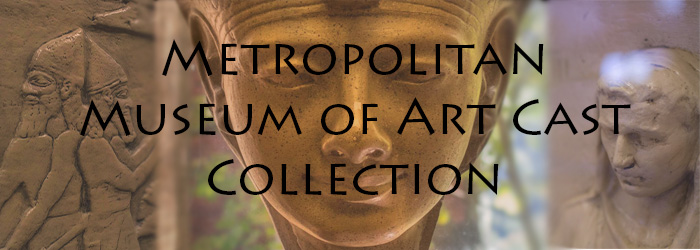
Description
Plaster cast of a relief depicting a Maenad, attributed to Callimachus. Original is a Roman copy (120–140 CE) of a Greek original (late 5th century BCE), housed in the Museo del Prado, Spain.
Publication Date
1978
Type of Artwork
Relief
Time Period/Geographical Region
Ancient Greece
Height (cm/in)
154.94 cm / 61 in
Width (cm/in)
76.2 cm / 30 in
Depth (cm/in)
13.97 cm / 5.5 in
Disciplines
Ancient History, Greek and Roman through Late Antiquity | Sculpture
Recommended Citation
Morehead State University. Camden-Carroll Library., "Dancing Maenad (Relief II)" (1978). Metropolitan Museum of Art Cast Collection. 35.
https://scholarworks.moreheadstate.edu/metropolitan_art_collection/35
Files
Download
Download Image (162 KB)


Comments
This is one of four reliefs made to adorn a monument dedicated to Dionysius, Greco-Roman god of the vine, grape harvest, winemaking, ritual madness, religious ecstasy, and theater. The woman depicted is a Maenad, a female follower of the Dionysian cult who would be inspired by the god to dance themselves into an ecstatic frenzy during sacred rites. The term "maenad" translates to "mad woman," as during the rites the women would enter a crazed, feverish trance. This Maenad, dressed in thin, flowing drapery, holds a thyrsus, a staff wrapped in ivy leaves and tipped with leaves and pine cones, and a crown of woven vines and ivy leaves in her flowing hair.
This is a Roman copy of a Greek original sculpture. The Romans admired many Greek works and made copies and reproductions in different media. Sometimes, the Roman copy is the only object that survives. This particular cast seems to have been made from a complete Roman copy at the Prado Museum in Madrid. There is a partial (cracked) Roman copy of the same relief at the Metropolitan Museum of Art.